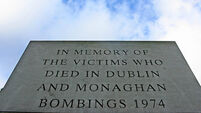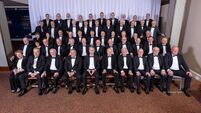The biographer who unwittingly made Michael Collins gay

Although Piaras Beaslaí served in the first three Dáils and attained the rank of Major General during the Troubles, he is probably best remembered as the first biographer of Michael Collins, with whom he was closely associated.
After quitting politics in 1923 and leaving the Free State Army the following year, Beaslaí began writing a full-length biography of Collins at the invitation of the Big Fellow’s eldest brother, Johnny Collins.
















